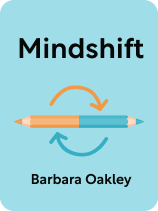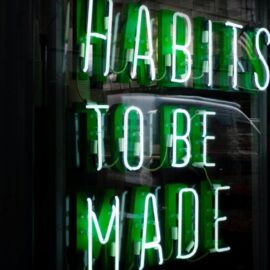

This article is an excerpt from the Shortform book guide to "Mindshift" by Barbara Oakley. Shortform has the world's best summaries and analyses of books you should be reading.
Like this article? Sign up for a free trial here.
Are you willing to go back to being a beginner if that means that you’re learning something new? What career path would you go down if you had the required skills?
In her book Mindshift, Barbara Oakley provides encouragement to those who feel stuck in their career. She says that you’re capable of learning new information and skills. It just requires being open-minded about your own abilities.
Keep reading to learn how to be more open-minded and discover new opportunities as a result.
How to Be More Open-Minded
Oakley’s three main tips for having a mindshift are to change your perspective, determine what you want to do next, and learn how to learn. Once you know how to be more open-minded, you’ll be well on your way to a mindshift that can take you in new and exciting directions.
#1: Try Altering Your Perspective
Oakley says that, to have a mindshift, you first need to adjust your mindset. In particular, you should realize the value of your experience and be humble.
Realize the Value of Your Experience
Oakley writes that shifting to something new may seem intimidating because you feel like others in your desired field have a head start, but she argues that starting later than your peers doesn’t necessarily put you at a disadvantage. In fact, she asserts that your experience in one field gives you unique, transferable skills that you can use in unexpected ways in another field. She gives the example of a Juilliard-trained musician who later became a doctor; his musically trained ear gave him the unique ability to detect irregular heart sounds.
(Shortform note: Oakley’s example of a musician-turned-physician isn’t all that unusual. Recognizing the value of musicians’ training, Canada’s Memorial University of Newfoundland recruits many of its music students to study medicine. Aside from having a heightened sense of hearing, musicians (such as pianists) have other transferable skills like manual dexterity, an essential skill for surgery. Musicians who’ve trained for years also have the same kind of discipline and work ethic that studying medicine requires.)
Further, Oakley says that your experiences don’t even have to be related to your career and can instead come from your hobbies. For example, if you’ve built a respectable following by making cooking videos on your personal TikTok account, you might parlay this experience into helping your employer generate more engaging Instagram reels on the company account.
(Shortform note: Job interviews are a good opportunity to let potential employers know how your hobbies can be an asset. Prepare for the “What are your hobbies and interests?” question by listing your hobbies and thinking about the skills you gained from them. These skills can include teamwork, patience, and creativity. Then, during your interview, mention how you can use those skills on the job.)
Be Humble
While it’s important to know the value you bring to a new field, it’s equally important to embrace being a beginner. It may be difficult to find yourself back at square one, especially if you’re already highly accomplished in another field, but acknowledging your newbie status can make you more open to learning new things because you accept that you don’t know it all.
(Shortform note: Modern Stoic Ryan Holiday agrees with Oakley that humility is essential for learning. In Ego Is the Enemy, Holiday writes that your ego, which he defines as a sense of superiority, can impede your growth by making you feel like you have nothing else to learn. He emphasizes that learning is a lifelong process that requires you to seek and listen to feedback, continuously look for new challenges, and ask successful people to share their knowledge with you—all hallmarks of humility.)
#2: Plan for What’s Next
Once you’ve reframed your thinking and opened your mind to the possibility of learning new skills, reflect on your desired career path.
There are two ways to go about making a career change. The first is to shift to another field entirely, which requires persistence and a healthy dose of the humility Oakley prescribes. You might need to immerse yourself in an environment where you’ll get plenty of guidance and exposure to your target field. For example, if you want to become a pastry chef, you might leave a cushy office job so you can work as a server at a restaurant and closely observe a patissier in action.
(Shortform note: Making a big career change can be risky, so Scott Pape, “The Barefoot Investor,” gives two tips in his eponymous book: First, make the transition gradual. Keep your current job, and dip your toe into the field you’re interested in by working a side job. And second, connect with people in your desired field. Ask them about their success strategies and any leads for work opportunities.)
The second way to make a career change is to shift to something that’s still within your current field. Oakley says this is an especially viable option for those who’ve already spent years of study and practice in a demanding field such as medicine or law—you can explore another specialization instead of starting from scratch and putting in more years of exhaustive study. For example, if you’re an accountant, you can go from being an auditor who inspects companies to a financial consultant who helps individuals prepare for retirement.
(Shortform note: If you can’t decide which path to take next, experts recommend putting two career options side by side—if you had to pick one, which would it be? Then replace the career you didn’t pick with another career and choose again. Keep going until you have no more options and are left with The One. If, in the end, you find that two options are equally enticing, pick the one that’s easier for you to shift to, maybe because you have someone in your network who can help you get established in the field.)
#3: Learn to Learn Again
Once you determine what you want to learn, come up with a plan to learn it. The kind of learning you did in school, which may have focused on rote memorization, may not be the best route to achieving your goals. Oakley says that to learn more effectively, you should use both modes of your brain—focused mode and diffuse mode.
(Shortform note: Psychologist Edward de Bono has a description of the brain’s two modes that’s similar to Oakley’s. Focused mode corresponds to de Bono’s idea of “vertical” thinking while diffuse mode corresponds to his idea of “lateral” thinking. He differs from Oakley in that he says lateral thinking leads to new insights while vertical thinking allows us to analyze and select from a range of possibilities.)
Focused mode is when you concentrate fully on the material you’re learning. Oakley recommends “chunking” to help you master challenging concepts and skills. Chunking means breaking down a skill or concept into smaller parts (or chunks) and practicing each part over and over. Oakley explains that this repeated practice of small parts not only makes learning more manageable but also forms and strengthens the connections between brain cells. This leads to mastery of a skill.
You can apply chunking to both mental and physical skills. For example, if you’re learning something numbers-intensive, solve the same challenging math problem again and again over a few days until it becomes easy for you. If you’re learning to be a yoga instructor, you can practice a sequence of five poses at a time instead of trying to memorize an entire class’s worth of poses. Aside from being easier to master, chunking poses in this way also allows you to rearrange chunks and come up with various sequences of poses.
(Shortform note: Chunking and repeated practice can help you refine a skill, but true mastery is when you understand something well enough that you’re able to apply it to different contexts. In Ultralearning, Scott Young gives the example of Nobel Prize-winning physicist Richard Feynman, who went beyond memorizing theorems and formulas and developed a strong grasp of underlying principles, which enabled him to solve problems at impressive speeds. Young writes that you can gain a deeper understanding of what you’re trying to learn by allowing yourself to struggle through problems, challenging what you know about a concept, and connecting abstract ideas to concrete examples.)
On the other hand, diffuse mode is when you allow your brain to relax. Research suggests that this mode is a necessary part of learning, giving your brain time to process what you’ve learned, store it, and connect it with other information, leading to new insights. One example of diffuse mode at work is Archimedes’s eureka moment: When the Greek polymath was struggling to figure out how to prove that a crown was made of pure gold, he had a sudden insight while he was taking a bath and his brain was in relaxation mode.
(Shortform note: In the past, scientists believed that all the brain did while a person was relaxing was to support lung and heart function. It wasn’t until the 1990s—with the introduction of functional magnetic resonance imaging, or fMRIs—that scientists found that the brain is highly active (and more interactive) when people lie still or daydream. It is in this mind-wandering state that the diffuse mode kicks in, allowing our brains to consolidate memories and recharge, ready to engage in more focused thinking.)
Oakley says the Pomodoro technique—a method that entails 25 minutes of work interspersed with short breaks—is one way to tap into the powers of your brain’s two modes. During the 25 minutes of work, you use focused mode to concentrate on, say, solving a math problem. During the short break, you go into diffuse mode, allowing your brain to connect what you just learned with other knowledge you have stored in your brain.
(Shortform note: The Pomodoro technique isn’t always the best way to learn. Some people feel that 25 minutes is too short and keeps them from reaching a “flow” state, while others feel the time is too long for the tasks they have to complete. You may want to save the Pomodoro technique for tasks that you tend to avoid or that aren’t mentally demanding; otherwise, explore other options like the less rigorous “flowtime.” With flowtime, you focus on a single task for as long as you can—without the added pressure of working against a clock—and take a break only once you start to get distracted.)

———End of Preview———
Like what you just read? Read the rest of the world's best book summary and analysis of Barbara Oakley's "Mindshift" at Shortform.
Here's what you'll find in our full Mindshift summary:
- That it's never too late to make a career change
- How to overcome the mental barriers that hold you back
- Why career shifts are essential in the fast-changing world






